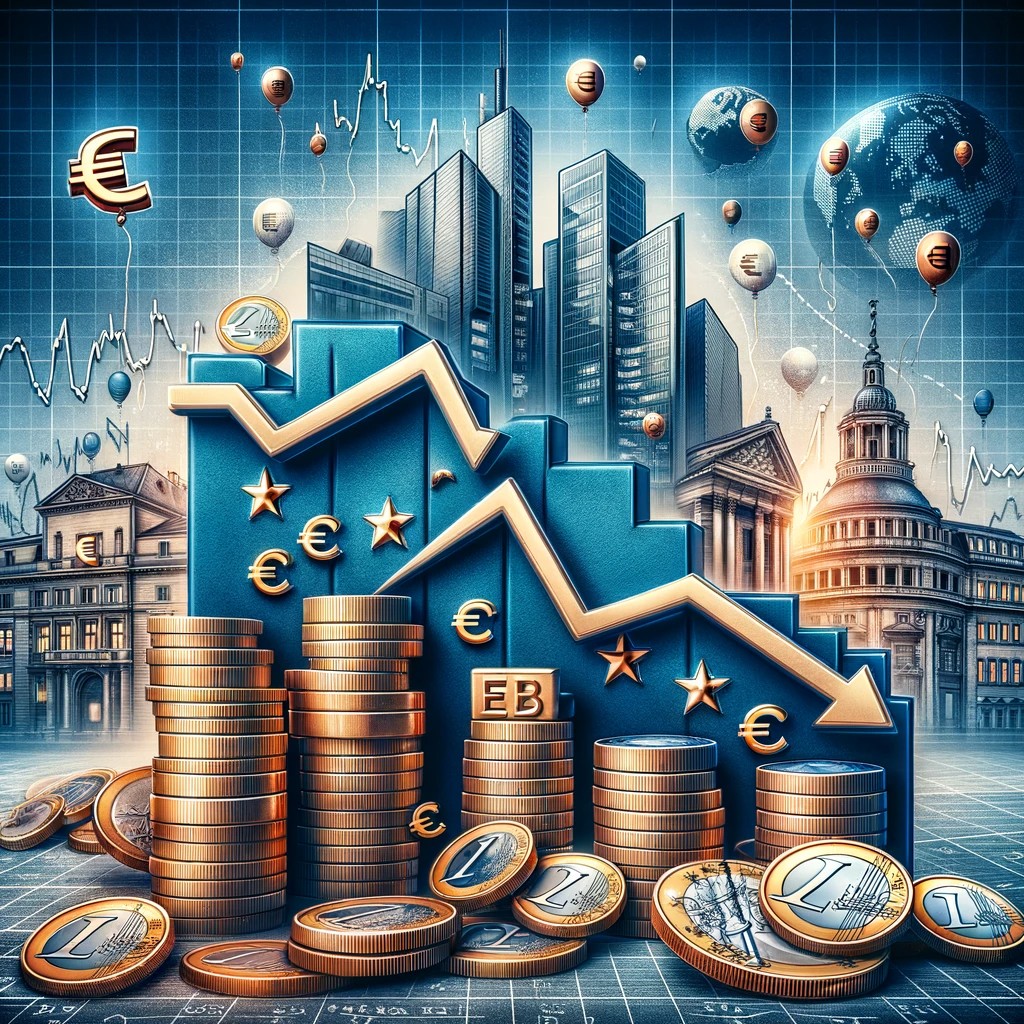The European Central Bank (ECB) is holding the reins tight on its key interest rate, maintaining it at a record high of 4%, signaling a strategic move as Europe witnesses a slow yet steady journey towards disinflation. The Frankfurt-based financial powerhouse stands firm in its resolve, echoing a mantra of maintaining borrowing costs at “sufficiently restrictive levels for as long as necessary.” This decision marks the third consecutive meeting where the ECB has chosen to hold its ground, a move that reflects its commitment to navigating the complex economic landscape of Europe.
Tackling Inflation: A Delicate Balance
The ECB’s recent stance emerges against the backdrop of a gradual decline in inflation, aligning with its forecasts and expectations. The governing council acknowledges this downward trend but remains wary of the current financial landscape, emphasizing that tight financing conditions play a crucial role in curbing inflation. In its recent analysis, the ECB noted a continued decline in underlying inflation, driven largely by previous rate hikes’ impact on financing conditions. This observation is pivotal, shedding light on the ECB’s monetary policy effectiveness in real-time.
Investors and economists are now keenly awaiting insights from ECB President Christine Lagarde, anticipating her perspective on the rate of inflation’s decline and potential timelines for easing borrowing costs. The focus is not just on the present state but also on the future trajectory of Europe’s economic health. Analysts are recalibrating their forecasts for the eurozone’s growth and inflation, factoring in recent data that points to a slowing economy. There’s a palpable sense of caution in the air, with concerns about high wage growth and supply chain disruptions, further complicated by geopolitical tensions, adding to the uncertainty.
Europe’s Economic Outlook: Cautious Optimism
As Europe navigates these turbulent economic waters, the ECB’s decision reflects a broader, more global dilemma faced by central banks. Like the ECB, the US Federal Reserve is grappling with similar issues, as evident in the cautious remarks from Fed officials. Both institutions appear in no rush to initiate rate cuts, underscoring a shared approach towards ensuring economic stability without choking growth.
In the same vein, Norway’s Norges Bank has held its benchmark rate steady, mirroring the ECB’s cautious optimism. The ECB, like its counterparts, walks a tightrope, striking a balance between reining in inflation and avoiding a hard landing for the economy. The recent uptick in eurozone inflation, driven by a complex mix of factors, including government interventions in energy bills, adds another layer to this economic puzzle.
Amid these challenges, the eurozone’s economy shows signs of contraction, with output shrinking in recent quarters. The higher borrowing costs have inevitably cooled down loan and mortgage demands, contributing to this slowdown. However, Lagarde remains optimistic, seeing the battle against inflation as “on the right path,” with a return to the ECB’s two-percent inflation target projected by 2025.
In her typical fashion, Lagarde has signaled that any decision on rate cuts will be data-driven, dependent on upcoming wage agreement data in the eurozone. This wait-and-see approach, as echoed by analysts like KfW’s chief economist Fritzi Koehler-Geib, is seen as a strategic move to mitigate the risk of inflation flaring up again.
As Europe stands at this economic crossroads, the ECB’s current policy stance serves as a testament to its commitment to steering the eurozone through these challenging times. With a keen eye on various risk factors, from Middle Eastern tensions to wage negotiations, the ECB is poised to respond adaptively, balancing the need for monetary tightening with the imperative to support economic recovery. As the continent braces for what lies ahead, the ECB’s leadership under Lagarde will undoubtedly play a critical role in shaping Europe’s financial destiny.





